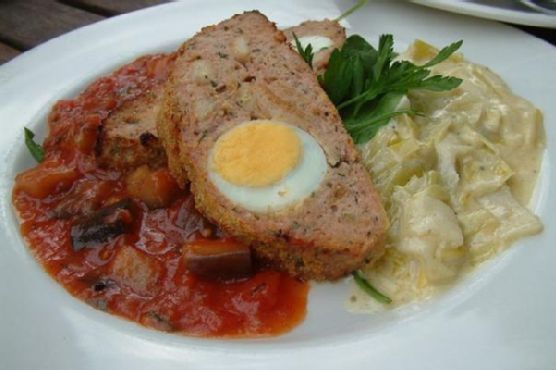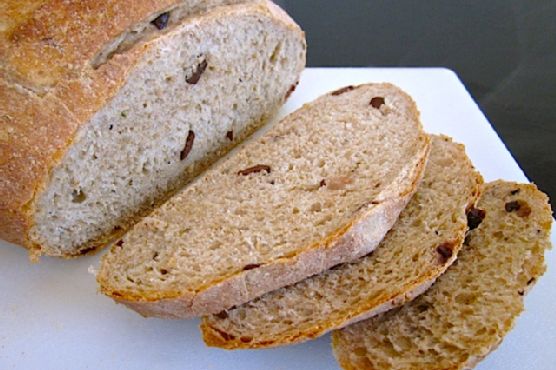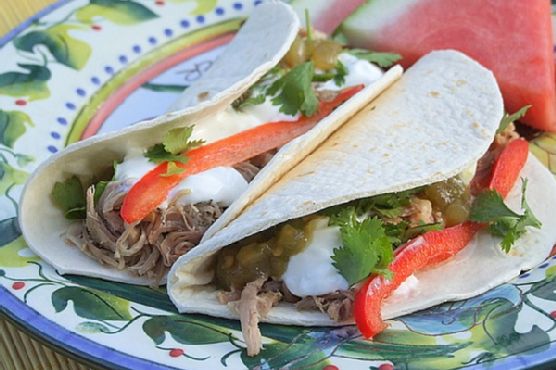Homemade Pancetta
Homemade Pancetta might be a good recipe to expand your main course recipe box. One serving contains 1001 calories, 18g of protein, and 101g of fat. For $1.77 per serving, this recipe covers 13% of your daily requirements of vitamins and minerals. This recipe serves 12. 67 people were glad they tried this recipe. This recipe from Leites Culinaria requires kosher salt, pork belly, garlic cloves, and ground pepper. It is a good option if you're following a gluten free and dairy free diet. From preparation to the plate, this recipe takes about 30 minutes. Taking all factors into account, this recipe earns a spoonacular score of 45%, which is solid. Similar recipes are Quaglie con Pancetta (Quail with Pancetta), Pancetta-Sage Turkey with Pancetta-Sage Gravy, and Pancetta Biscuits.
Servings: 12
Preparation duration: 30 minutes
Ingredients:
4 bay leaves, crumbled
2 tablespoons dark brown sugar
4 garlic cloves, minced
4 tablespoons coarsely ground black pepper, divided
2 tablespoons juniper berries, crushed with the bottom of a small saute pan
1/4 cup Morton's kosher salt
1 teaspoon freshly grated nutmeg
2 teaspoons pink salt (see Note)
1 5-pound slab pork belly, skinless
Equipment:
bowl
cheesecloth
stove
Cooking instruction summary:
1. Trim the belly so that its edges are neat and square.2. Combine the garlic, pink salt, kosher salt, dark brown sugar, juniper berries, bay leaves, nutmeg, thyme, and half the black pepper in a bowl and mix thoroughly so that the pink salt is evenly distributed. Rub the mixture all over the belly to give it a uniform coating over the entire surface.3. Place the belly in a 2-gallon Ziploc bag or in a covered nonreactive container just large enough to hold it. Refrigerate for 7 days. Without removing the belly from the bag, rub the belly to redistribute the seasonings and flip it over every other day — a process called overhauling.4. After 7 days, check the belly for firmness. If it feels firm at its thickest point, it’s cured. If it still feels squishy, refrigerate it on the cure for 1 to 2 more days.5. Remove the belly from the bag or container, rinse it thoroughly under cold water, and pat it dry. Sprinkle the meat side with the remaining black pepper. Starting from a long side, roll up the pork belly tightly, as you would a thick towel, and tie it very tightly with butcher’s string at 1- to 2-inch intervals. It’s important that there are no air pockets inside the roll. In other words, it can’t be too tightly rolled. Alternately, the pancetta can be left flat, wrapped in cheesecloth, and hung to dry for 5 to 7 days.6. Using the string to suspend it, hang the rolled pancetta in a cool, humid place to dry for 2 weeks. The ideal conditions are 50°F to 60°F (8°C to 15°C) with 60 percent humidity, but a cool, humid basement works fine, as will most any place that’s out of the sun. (I often hang mine in our kitchen next to the hanging pans on either side of the stove.) Humidity is important: If your pancetta begins to get hard, it’s drying out and should be wrapped and refrigerated. The pancetta should be firm but pliable, not hard. Because pancetta isn’t meant to be eaten raw, the drying isn’t as critical a stage as it is for items such as prosciutto or dry-cured sausages. But drying pancetta enhances its texture, intensifies its flavor, and helps it to last longer.7. After drying, the pancetta can be wrapped in plastic and refrigerated for 3 weeks or more, or frozen for up to 4 months. Freezing makes it easier to slice thin.Note: Pink salt, a curing salt with nitrite, is called by different names and sold under various brand names, such as tinted cure mix or T.C.M., DQ Curing Salt, and Insta Cure #1. The nitrite in curing salts does a few special things to meat: It changes the flavor, preserves the meat’s red color, prevents fats from developing rancid flavors, and prevents many bacteria from growing.
Step by step:
1. Trim the belly so that its edges are neat and square.
2. Combine the garlic, pink salt, kosher salt, dark brown sugar, juniper berries, bay leaves, nutmeg, thyme, and half the black pepper in a bowl and mix thoroughly so that the pink salt is evenly distributed. Rub the mixture all over the belly to give it a uniform coating over the entire surface.
3. Place the belly in a 2-gallon Ziploc bag or in a covered nonreactive container just large enough to hold it. Refrigerate for 7 days. Without removing the belly from the bag, rub the belly to redistribute the seasonings and flip it over every other day — a process called overhauling.
4. After 7 days, check the belly for firmness. If it feels firm at its thickest point, it’s cured. If it still feels squishy, refrigerate it on the cure for 1 to 2 more days.
5. Remove the belly from the bag or container, rinse it thoroughly under cold water, and pat it dry. Sprinkle the meat side with the remaining black pepper. Starting from a long side, roll up the pork belly tightly, as you would a thick towel, and tie it very tightly with butcher’s string at 1- to 2-inch intervals. It’s important that there are no air pockets inside the roll. In other words, it can’t be too tightly rolled. Alternately, the pancetta can be left flat, wrapped in cheesecloth, and hung to dry for 5 to 7 days.
6. Using the string to suspend it, hang the rolled pancetta in a cool, humid place to dry for 2 weeks. The ideal conditions are 50°F to 60°F (8°C to 15°C) with 60 percent humidity, but a cool, humid basement works fine, as will most any place that’s out of the sun. (I often hang mine in our kitchen next to the hanging pans on either side of the stove.) Humidity is important: If your pancetta begins to get hard, it’s drying out and should be wrapped and refrigerated. The pancetta should be firm but pliable, not hard. Because pancetta isn’t meant to be eaten raw, the drying isn’t as critical a stage as it is for items such as prosciutto or dry-cured sausages. But drying pancetta enhances its texture, intensifies its flavor, and helps it to last longer.
7. After drying, the pancetta can be wrapped in plastic and refrigerated for 3 weeks or more, or frozen for up to 4 months. Freezing makes it easier to slice thin.Note: Pink salt, a curing salt with nitrite, is called by different names and sold under various brand names, such as tinted cure mix or T.C.M., DQ Curing Salt, and Insta Cure #
8. The nitrite in curing salts does a few special things to meat: It changes the flavor, preserves the meat’s red color, prevents fats from developing rancid flavors, and prevents many bacteria from growing.
Nutrition Information:
covered percent of daily need















